Intro
Contents
As an audiophile constantly in pursuit of the pinnacle of sound quality, I’ve had the opportunity to explore various tools and technologies designed to enhance digital audio. One such tool that has caught my attention is PGGB, a sophisticated piece of software that aims to elevate the hobby through advanced up-sampling techniques. Developed with a keen focus on precision and quality, PGGB stands out for its methodical approach to upscaling your offline music files.
Where are the measurements?
For those readers seeking empirical data and objective measurements to underpin every audiophile claim, this may not be the ideal place for you. While I deeply respect the science behind sound and the quest for quantifiable excellence, my discussions here lean more towards the subjective experiences and personal impressions that music and sound evoke. This divergence isn’t to undermine the importance of objective analysis, but to embrace the inherently subjective nature of listening to and enjoying music. If your preference lies in rigorous testing and numerical analysis, you might find other resources more aligned with your approach.
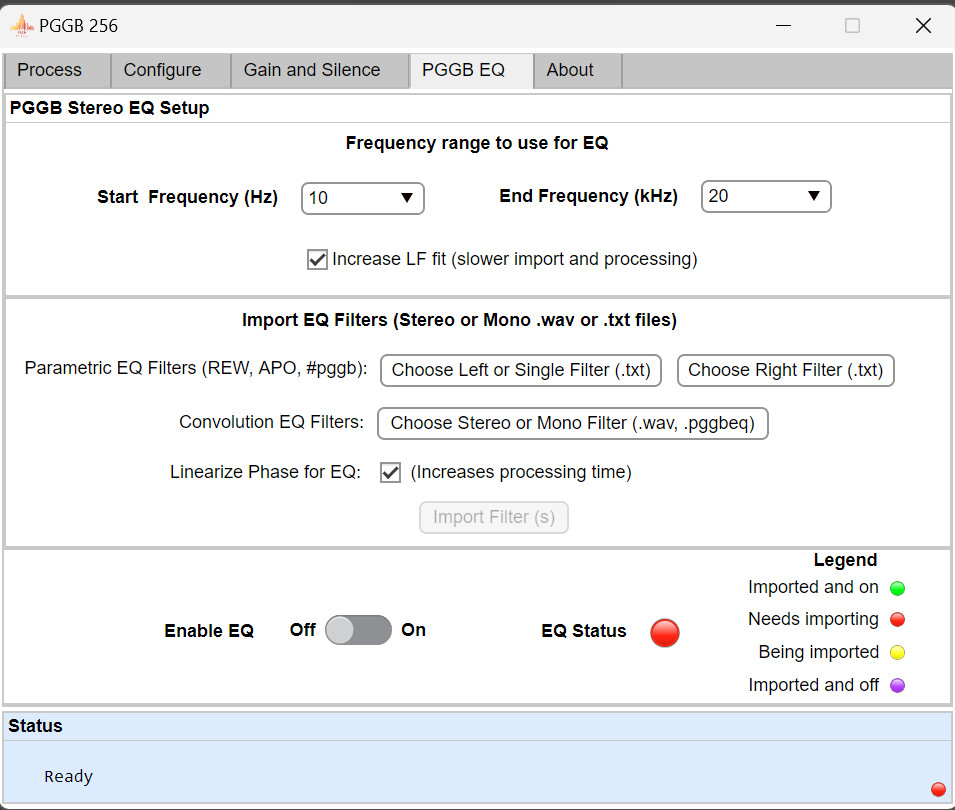

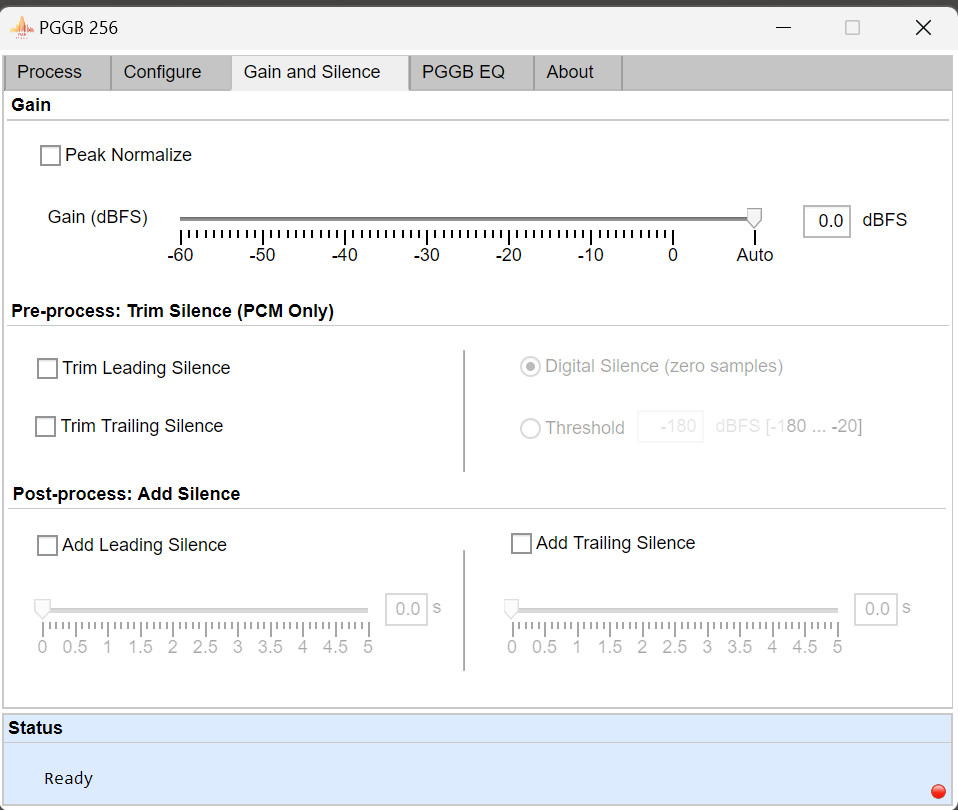

Why Upscale Your Music?
By increasing the resolution of each music file, upscaling attempts to unveil subtleties and nuances that were previously obscured or flattened in the original sampling rate. This enhancement is particularly beneficial for discerning listeners who crave the utmost detail and clarity in their music. The process of upscaling aims to breathe new life into each recording, expanding the soundstage and bringing a three-dimensional quality to the music that closely mirrors a live performance experience. It’s not just about adding more data points; it’s about reconstructing the audio waveform with greater precision, thereby capturing the essence of the original performance more faithfully.
One of the apparent benefits of upscaling lies in its ability to improve the transient response of music. Transients, the initial high-energy bursts of sound that occur at the beginning of musical notes, are crucial for perceiving the timbre and texture of instruments. Upscaling sharpens these transients, making each pluck of a guitar string, each strike of a drum, and each vocal inflection more distinct and palpable. This heightened clarity contributes to a more engaging and immersive listening experience, where each layer of the music is clearly defined and more easily appreciated. Moreover, upscaling aims to reduce digital artifacts and noise, resulting in a cleaner, purer sound that minimizes listener fatigue and allows for longer, more enjoyable listening sessions.
Fresh Ears
Beyond technical improvements, upscaling your music library is an emotional investment in your music collection. It allows you to experience your favorite tracks in a new light, uncovering depths and dimensions that were previously unnoticed. This rediscovery can deepen your connection to the music, revealing emotional layers that enhance your appreciation of the artistry involved. Whether you’re an audiophile seeking the pinnacle of high fidelity or a music lover looking to rekindle your passion for your collection, upscaling offers a pathway to exploration.
Again, that’s the goal of upscaling music. Whether it’s achieved depends on the listener. Now, if the mastering quality of the recording is crap, upscaling will only make those flaws more apparent. Remember, software that helps in upscaling such as HQPlayer, Roon, and PGGB…they just upscale, although it is a “variant” of the original, I wouldn’t consider it a proper remaster where you’re optimizing specific tracks from the original recording.
What makes PGGB special?
SACD and DSD
The history of high-resolution audio formats like SACD (Super Audio CD) and DSD (Direct Stream Digital) offers a fascinating glimpse into the quest for fidelity beyond the limitations of the traditional CD format. SACD, introduced by Sony and Philips in 1999, was designed to provide better performance by using a different encoding system known as DSD. Unlike the PCM (Pulse Code Modulation) used in CDs, DSD records audio as a sequence of single-bit values at a very high sampling rate of 2.8224 MHz. This method captures more detail and nuance of the original analog sound waves, offering listeners a closer approximation to the original performance.
DSD, the encoding format of SACD, operates on the principle of delta-sigma modulation. It produces a very dense stream of 1-bit values (either 0 or 1), which, when processed through a DSD-capable DAC (Digital-to-Analog Converter), results in a smooth, analog-like waveform. The high sampling rate and single-bit depth allow DSD to recreate audio frequencies with great precision, providing a wide dynamic range and a rich, detailed soundstage. However, the SACD format and DSD encoding have faced challenges in terms of widespread adoption, partly due to the need for specialized equipment and the rise of digital music distribution.
PGGB
PGGB (Pan Galactic Gargle Blaster), on the other hand, represents a different approach to enhancing sound quality, focusing on the upscaling of standard PCM audio files. Unlike SACD and DSD, which require specific recording and playback hardware, PGGB works with existing digital audio files, applying advanced algorithms to increase their resolution. This process involves upscaling the sampling rate and bit depth of PCM files, which can lead to improved clarity, depth, and detail in the playback. PGGB’s method is particularly suited to optimizing digital music libraries for playback on high-resolution audio systems, offering a practical way to enhance the listening experience of readily available PCM files.
Comparing SACD/DSD and PGGB highlights fundamental differences in approach to achieving high audio quality. SACD and DSD focus on capturing and reproducing audio in a format that closely mimics analog sound characteristics from the recording stage onwards. PGGB, in contrast, enhances existing digital audio files, making it a versatile tool for audiophiles looking to extract more detail and realism from their music collections without the need for SACD-compatible hardware. Both approaches contribute uniquely to the high-fidelity audio landscape, each offering a path to elevated sonic experiences.

DFT & Window-Sinc Function?
Understanding the intricacies of audio upscaling and reconstruction requires delving into the foundational techniques like Discrete Fourier Transform (DFT) and windowed-sinc functions. These methods offer contrasting approaches to dissecting and reassembling the complexity of sound within a digital audio file. This section explores the mechanics behind DFT and windowed-sinc functions, shedding light on how they influence the fidelity and texture of upscaled music, with a special focus on the role of ‘taps’ in enhancing the transient performance. Keep in mind taps is mostly related to windowed-sinc functions – which PGGB does not use.
Discrete Fourier Transform (DFT):
DFT is a mathematical technique used to convert a sequence of data points, like a digital audio signal, into components of different frequencies. Think of it as breaking down a complex audio track into simpler pieces (sine waves) that, when combined, recreate the original track. This process is crucial for analyzing and modifying the frequency content of the audio signal. PGGB uses DFT to analyze the entire audio track, which allows it to understand and reconstruct the audio signal with high accuracy, essentially capturing the holistic view of the music more effectively.
Windowed-Sinc Function:
On the other hand, traditional windowed sinc functions are another method used in resampling audio. The “sinc” function is ideal for reconstructing an audio signal because, in theory, it perfectly reconstructs the original signal from its samples. However, it’s impractical to use in its pure form because it extends infinitely. To make it usable, the sinc function is “windowed,” or cut off, beyond a certain point, which makes the function finite and usable for processing. This method involves taking small “windows” of the audio signal and processing them one at a time. While effective, this approach can introduce approximations since it only considers a limited portion of the audio signal at any given time.
PGGB’s Philosophy
At the heart of PGGB’s functionality is its adept use of Discrete Fourier Transform (DFT). Again, it’s a mathematical technique pivotal in converting a sequence of values (like those in a digital audio file) into components of different frequencies. This process is crucial for analyzing the audio signal in the frequency domain, allowing PGGB to dissect and reconstruct the audio with remarkable accuracy.
Unlike conventional methods that often rely on windowed-sinc functions or other filter design techniques for resampling, PGGB adopts a unique stance. Traditional windowed-inc functions, though effective, are supposedly limited by their fixed length, confining their processing to short segments of the audio signal. This limitation can potentially lead to inaccuracies in audio reconstruction, especially for longer audio tracks.
PGGB, however, attempts to transcend these boundaries by employing an DFT-based method that permits the analysis and reconstruction of the entire audio track. This comprehensive approach supposedly enables PGGB to achieve near-theoretical limits of reconstruction accuracy, closely approximating the ideal reproduction of the original audio signal.

Perceptual Feedback and Customization:
PGGB’s design philosophy extends beyond mere technicalities, incorporating perceptual feedback into its development process. This approach acknowledges the importance of the subjective listening in shaping a tool capable of delivering superior sound quality. Moreover, PGGB offers a range of customization options, granting users the flexibility to adjust settings in alignment with their audio equipment and personal preferences.
Addressing Quantization Noise:
Another aspect where PGGB shines is in its handling of quantization noise, an inevitable byproduct of converting analog signals to digital formats. PGGB skillfully manages this noise, employing techniques to reduce its perceptibility and ensure a cleaner, more transparent sound.
What does this all mean?
In essence, PGGB’s method can be likened to having a more complete view of a puzzle, rather than focusing on individual pieces one at a time. This allows for a more accurate and faithful reconstruction of the audio signal, preserving the nuances and quality of the original recording.
For more details, check out PGGB’s website.
PGGB Real-Time Upscaling
This entire review has been done with the offline upscaling via PGGB. Real-time upscaling is offered as part of a free Foobar plugin, In partnership with Audiowise, they’re expanding PGGB’s reach to the broader audio community as part of their commitment to giving back. The Foobar plugin embodies the core principles of PGGB. However, it’s important to note that this plugin operates with a 64-bit precision limitation.
PGGB-IT!
PGGB-IT! serves as a complementary tool to PGGB, rather than a real-time substitute. Developed through a licensing agreement with Audiowise, PGGB-IT! features a .Net-based interface that mirrors the output quality of PGGB. It enhances functionality by enabling the processing of multi-channel music and supporting parallel track processing for users with ample RAM.
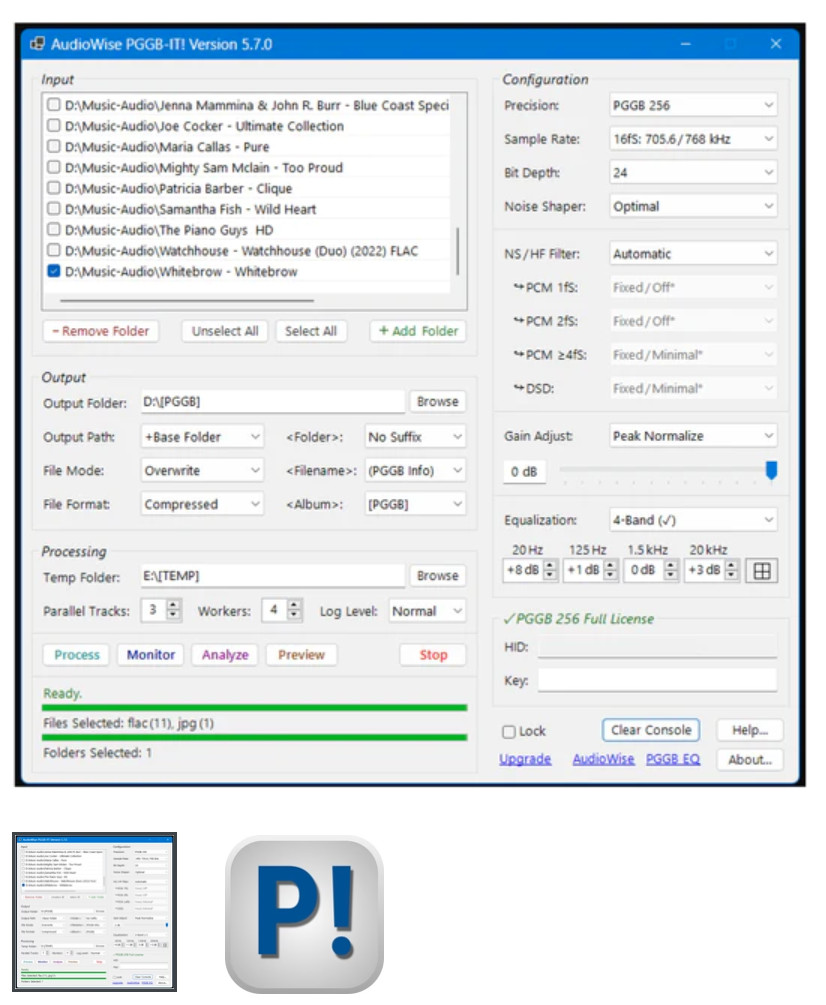
PGGB•IT! is a cutting-edge Windows application designed for the batch processing of music files using the advanced PGGB technology. It transforms FLAC files from standard CD quality (~44.1kHz) to ultra-high quality (~705.6kHz), enhancing playback sound quality on capable DACs. The software boasts a multi-threaded user interface, efficient .NET processing, and supports multi-core systems for simultaneous track processing. Features include FFMPEG audio file processing, lossless equalization, folder monitoring, keyboard remote control, and a preview mode. Licensed by AudioWise from remastero.com, PGGB•IT! ensures the latest in audio remastering quality and performance. Available as a no-cost trial, users can upgrade for enhanced precision levels, with higher precision markedly improving sound quality on transparent systems. PGGB•IT! is compatible with Windows 10/11 and Windows Server systems, requiring at least 16GB of RAM and a fast SSD, and can also run on Apple Mac with specific installations.

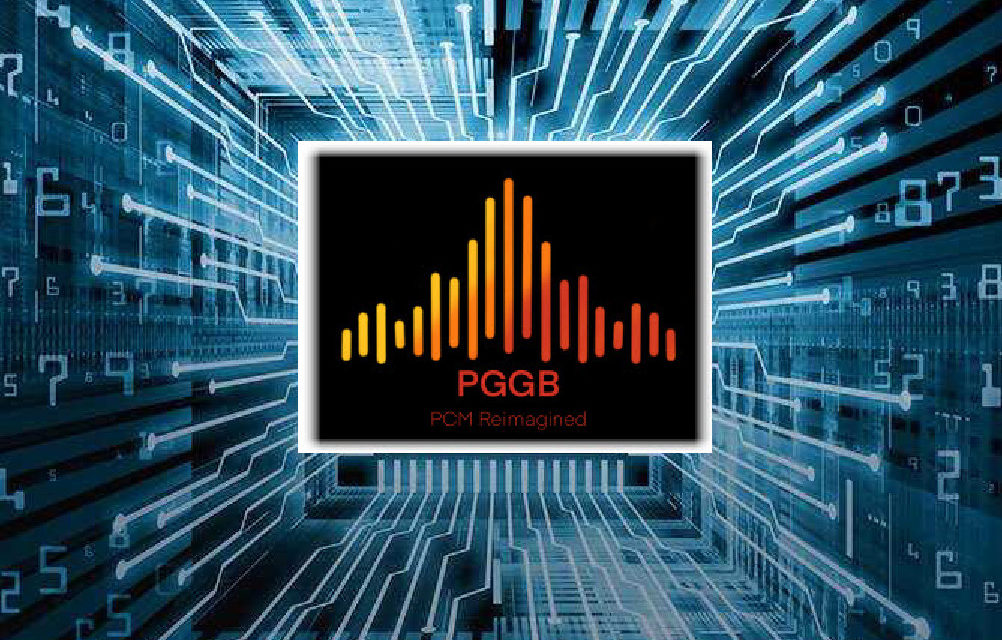


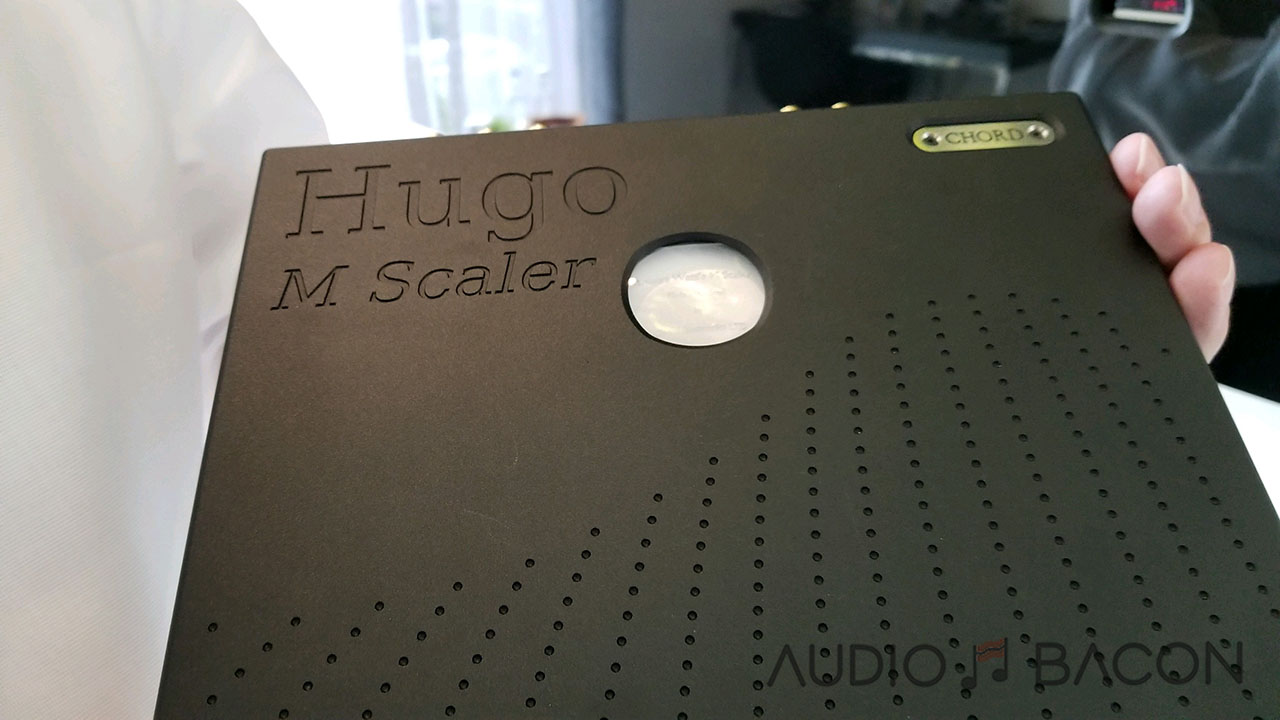

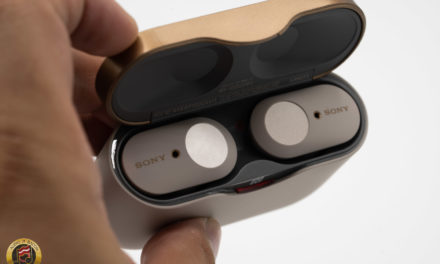


Recent Comments